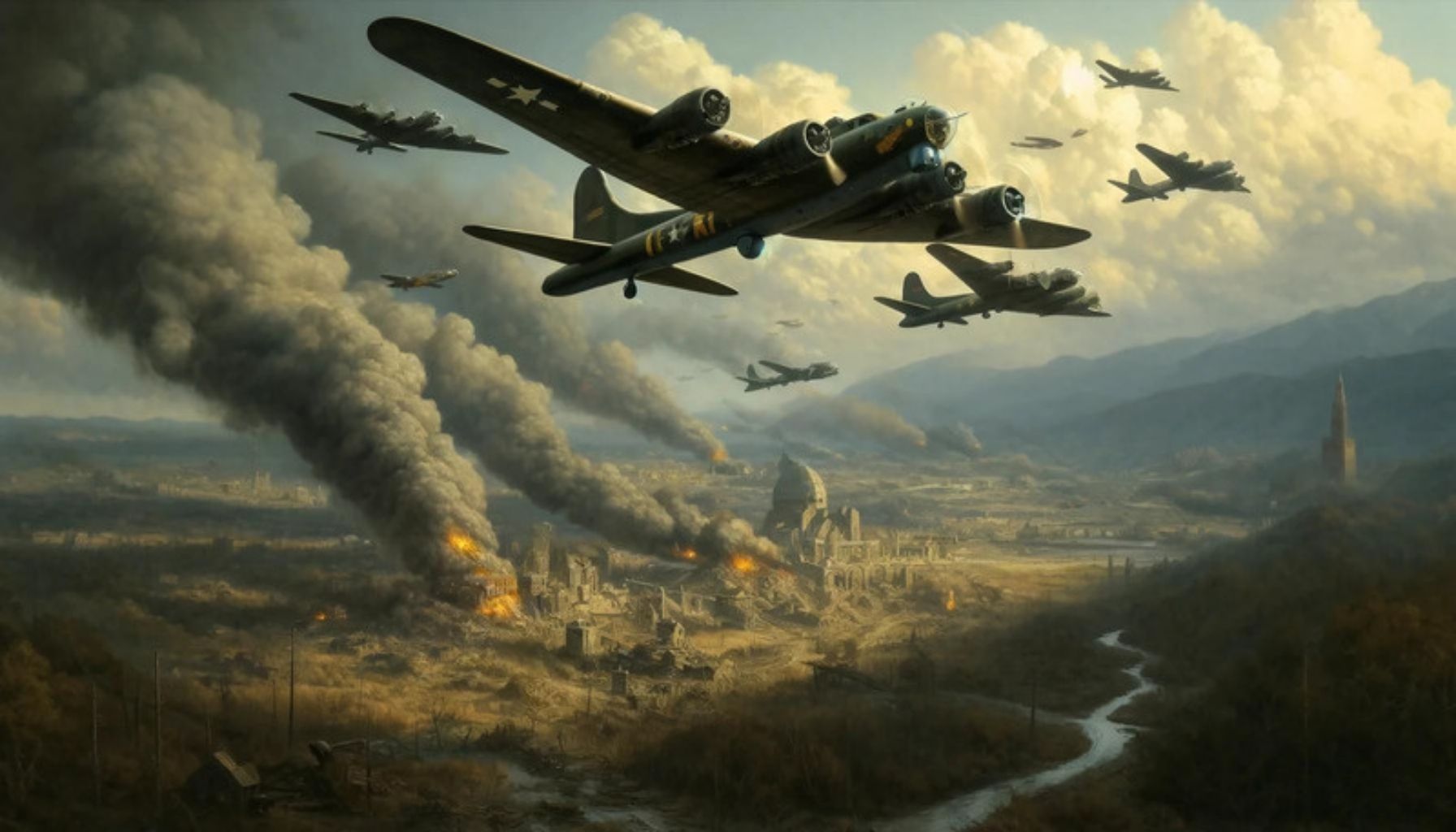Treviso 1944. Was it a mistake?
The bombing of Treviso, 7 April 1944

B-17 bombers - Image created by artificial intelligence
During WWII, there were many civilian casualties from bombings, including in the case of Treviso. On April 7, 1944, Good Friday, while Easter was being celebrated, American bombers, aiming for the Treviso station and the Motta junction to disrupt German supplies, missed their target. Few bombs hit the mark, and most fell on the city center, destroying air-raid shelters, entire neighborhoods, and killing about 1600 civilians. Accounts tell of burned, mangled bodies covered in newspapers, people digging through the rubble with bare hands.
In the 1990s, historians and scholars sought to answer the "whys" of the Treviso residents who had been wondering for almost 50 years about the reasons behind such a tragedy. Several research studies and arguments were conducted to find someone responsible. In 1992, "Objective Good Friday" was published. According to the authors' reconstructions drawing from American archives, the imprecision was to blame. The B-17 bombers were equipped with the Norden bombsight mounted on the aircraft's nose to target the objective during approach. Theoretically, they could release bombs within a 30-meter diameter circle from an altitude of about 7000 meters, a height necessary to avoid anti-aircraft fire. In reality, the Norden proved to be far from precise, and "precision bombing" often turned into "area bombing," causing many casualties and widespread destruction. Others, who echoed the arguments of 1944 supported by the R.S.I., claimed that the Allies bombed with the intention of killing women and children and destroying Italian cities. For some, referring to the press of the time, the Allies' goal was to massacre the population to force them to surrender to the enemy. Recent historical research has shown that between '42 and '43, the Allies targeted the population's morale because Italy was part of the Axis; however, this was no longer the case in '44 when Italy had surrendered, and future alliances were foreseeable. The perpetrators of the massacres were military errors and a complete lack of precision.
Site: Baldoli Claudia “La memoria dei bombardamenti nelle regioni del Nord Italia”- Treccani Encyclopedia, 2015
Site: National Museum of the United States Air Force
Nazareno Acquistucci, Curators E. Brunetta, E. Artico “Obiettivo Venerdì Santo. Il bombardamento di Treviso del 7 aprile 1944 nei documenti dell’Aeronautica Militare Statunitense”, Canova, 1992 - Ed. 2005
Artemisia
11/01/2026
Salvatore Ciccarello